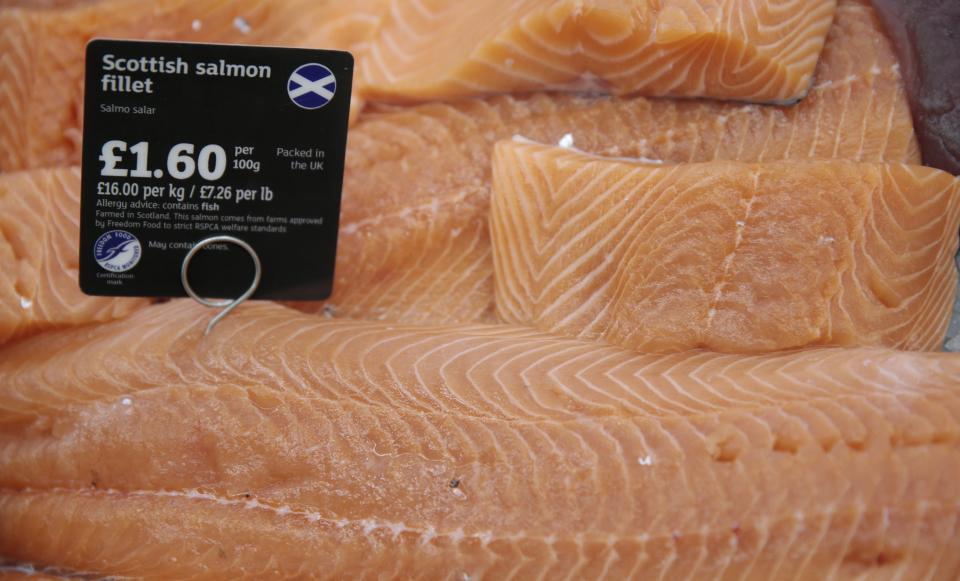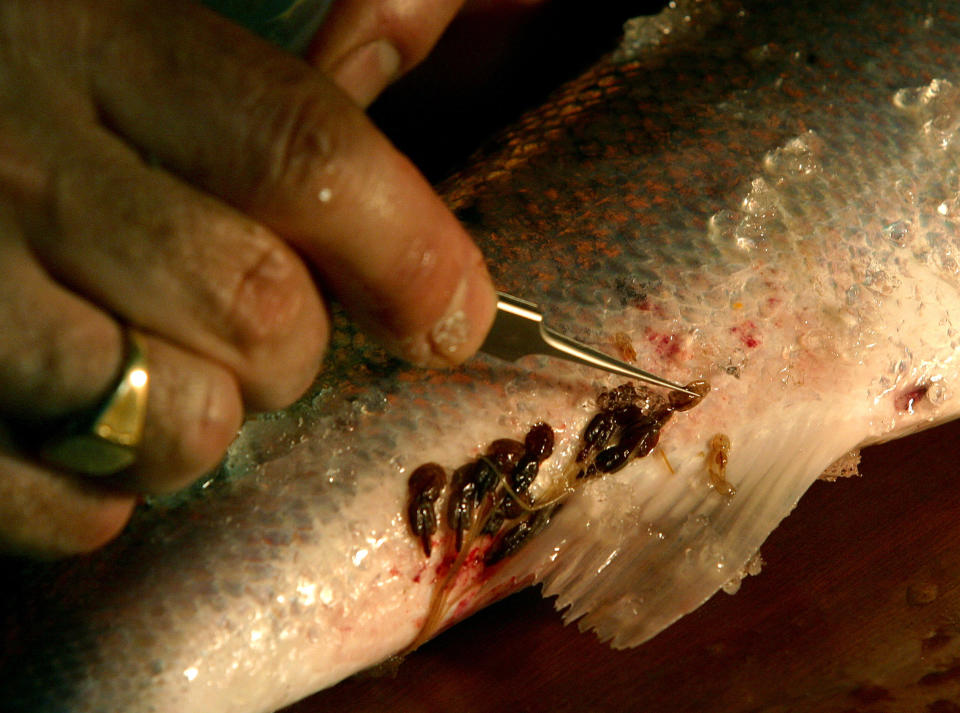Scottish salmon sold to Tesco and Sainsbury's 'riddled with sea lice'

Scottish salmon sold at a range of supermarkets including Tesco, Sainsbury’s and Co-op, has up to 20 times the acceptable level of sea lice on it.
Data obtained by Salmon and Trout Conservation Scotland discovered that there was an average of three lice found in each farmed fish.
Current guidelines dictate that each farmed fish must have no more than one parasite. When left untreated, the lice can cause loss of fins, scarring, secondary infections and death.
MORE: Tesco is selling green satsumas in an effort to cut food waste
Andrew Graham- Stewart, director of S&TC Scotland said that many of the individual farms’ sea lice numbers were “far worse” than the pressure group ever believed.
He said: “Sea lice numbers on farmed fish across much of the industry are of epidemic proportions.”
Fish from the Scottish Salmon Company – which supplies the Co-op – were the worst affected, and were riddled with unacceptable levels of lice at six of its 10 farms for a whole year. At its Furnace Quarry farm, each fish was found to have 23 sea lice over seven weeks.
MORE: Britons have spent £4 million on mince pies already
Tesco salmon supplier Grieg Seafood Shetland was found to have an average of 22 adult lice per fish on their Score Holm farm.
Fish from Marine Harvest, which supplies Sainsbury’s, was also named on the list.

Guy Linley-Adams, solicitor for S&TC Scotland, said it was now clear why ministers in Scotland tried to block the release of the lice figures.
He said: “It is to Scottish Ministers’ shame that it took a formal legal referral to the Scottish Information Commissioner from a conservation charity to make them recognise the obvious legitimate public interest in identifying poorly-run poorly-managed fish farms, so that consumers can avoid buying fish from those farms and those suppliers.
MORE: Wine prices set to rise as production nears 50-year low
“The true extent of the failure of salmon farms to control sea lice is astonishing. Claims that the situation is under control are risible and we will now write to the supermarkets asking them to stop selling salmon from the worst-performing farms.”
Grieg Seafood accepted that the sea lice levels at some of its sites were “too high” and that measures were being introduced to tackle the situation.

 Yahoo Finance
Yahoo Finance 
